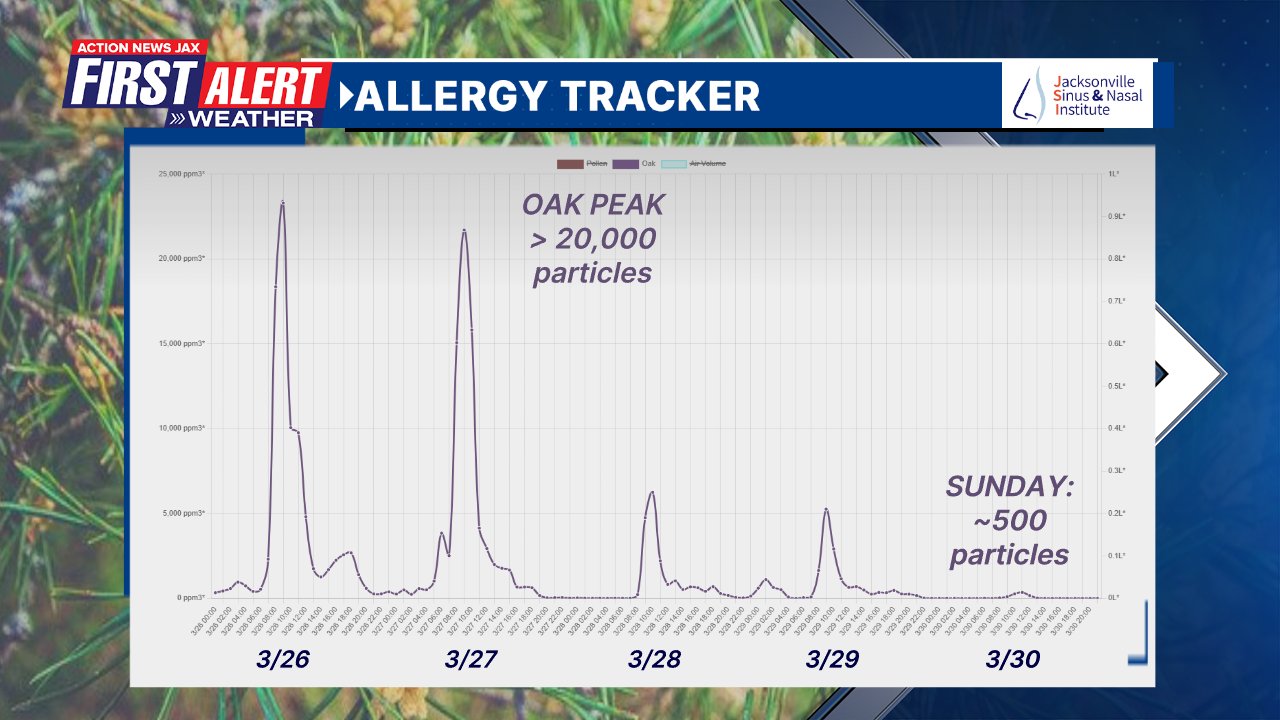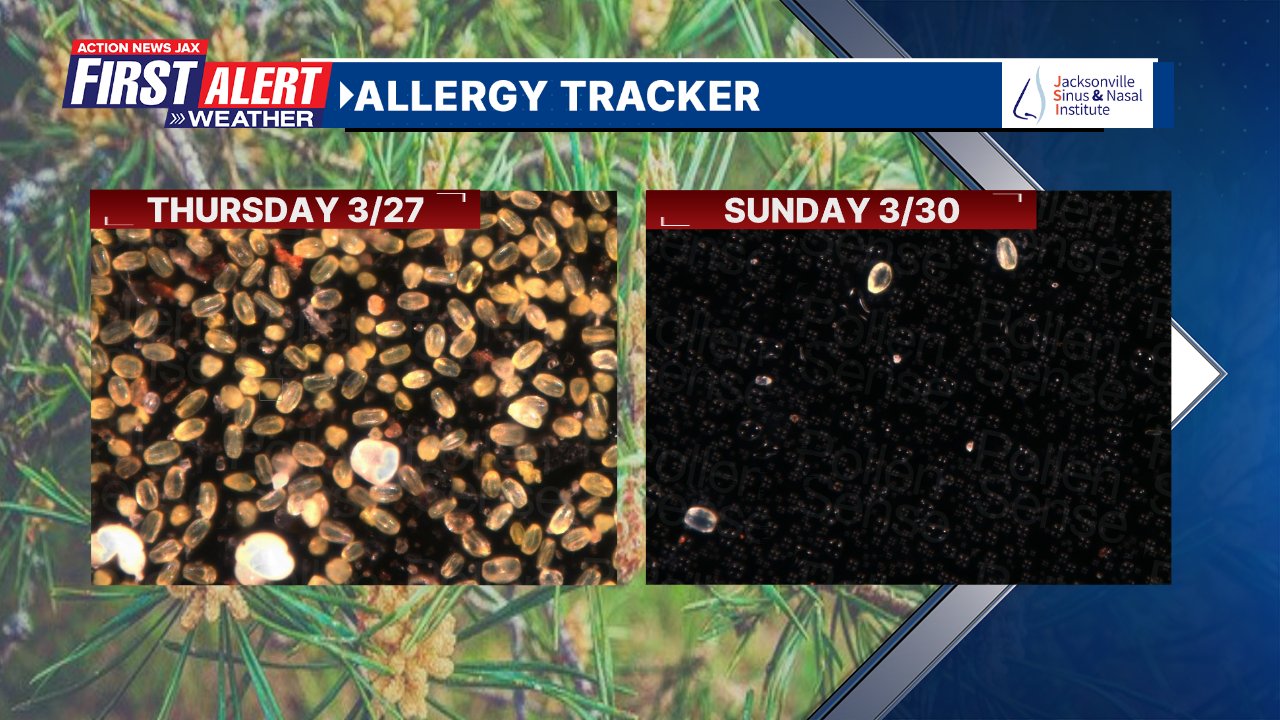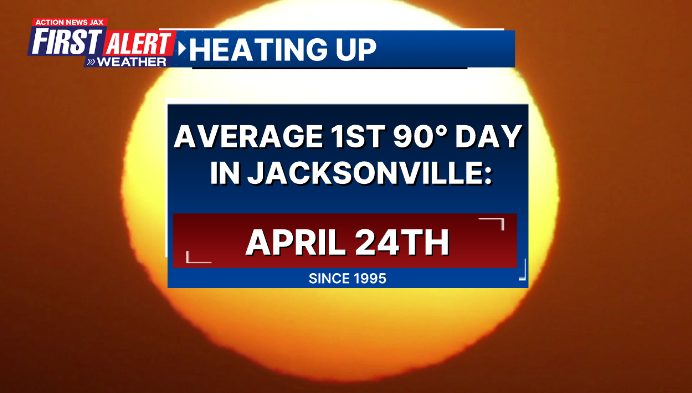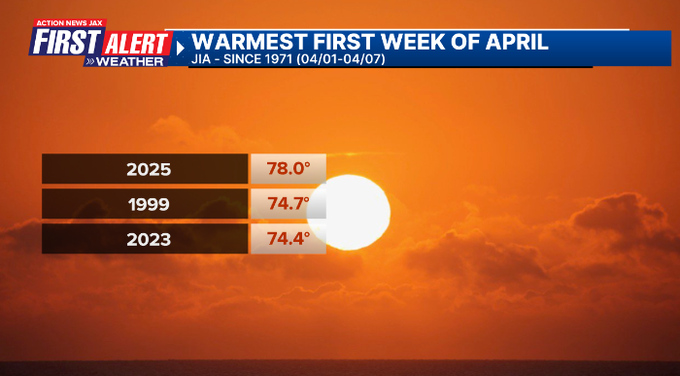JACKSONVILLE, Fla. — You can become a part of the First Alert Neighborhood Weather Network. Scan below &/or click * here *:
Our - Jacksonville/NE Fl./SE Ga. - spring pollen season has finally peaked!! It was a wicked one thanks to an unseasonably cold winter that included 18 freezes. So most plants froze then went through the process of new growth & blossoms leading to an “explosion” of pollen. Our First Alert pollen tracker sensor on the roof the Action News Jax building measured a peak on March 26th & 27th followed by a dramatic drop at the end of the month. So while we always have pollen in the air pretty much year round, we’re past the worst of the most nauseating spring pollen from pine, cedar & oak trees. The second image below shows the dramatic decrease in oak pollen particles on the slide from March 27th vs. March 30th.
Check out the dramatic slides below from the First Alert Allergy Tracker showing a slide full of oak pollen on March 27th vs. far fewer spores just a few days later on March 30th.
All the oak “pods” on the ground piled up in drifts is another indicator that pollen has peaked as fresh oak leaves have forced the old leaves to the ground.
And we already have our first three 90-degree days of the year - 3 days in a row from April 5-7 in what was the warmest first week of April at JIA since the thermometer has been at its present location going back to 1971. Jacksonville averages 82 90-degree days per year so buckle up!
April is “Water Conservation Month”:
In partnership with the Florida Section of the American Water Works Association (FSAWWA) and other state and local entities, the St. Johns River Water Management District is recognizing April as Water Conservation Month, reinforcing the need for smart water use as irrigation season ramps up.
Now in its 27th year, Water Conservation Month raises awareness about water consumption and encourages Floridians to take action to protect the state’s water resources. This year’s theme focuses on irrigation evaluations, a key strategy for reducing water use in residential and commercial landscapes. Outdoor irrigation accounts for more than 50% of water use in new single-family homes, making it a major focus of conservation efforts.
“Water Conservation Month is a great reminder that we all play a role in protecting Florida’s water resources – not just in April, but year-round,” said St. Johns River Water Management District Director of Water Supply Clay Coarsey. “Everyone can make a difference by practicing smart irrigation, watering only when needed and choosing Florida-Friendly landscaping.”
Additional ways to conserve water include checking for leaks, installing water-efficient fixtures and selecting low-maintenance landscaping that requires less irrigation.
For more information on Water Conservation Month and water-saving tips, including signs of a stressed lawn visit * here * or explore the Water Less campaign website * here *.

April night skies (Sky & Telescope):
April 12 (dusk): The full Moon and Spica rise in close tandem in the east-southeast. (The Moon will cover the star as seen from Central America and South America.)
April 17 (morning): The waning gibbous Moon trails Antares by about 4°.
April 19 (morning): The waning gibbous Moon is in the “Teapot” of Sagittarius.
April 21–22 (all night): The Lyrid meteor shower is expected to peak. The Moon, just past last quarter, interferes somewhat after it rises after midnight.
April 24 (dawn): Venus blazes low above the eastern horizon with Saturn 4° to its lower right. The waning crescent Moon is to the right of the planetary duo.
April 25 (dawn): The thin lunar crescent, Venus, and Saturn form a triangle low in the east. Mercury is at lower left, close to the horizon.
April 28 (dusk): The delicate sliver of the waxing lunar crescent leads the Pleiades by about 4° as they sink toward the horizon after sunset.
April 30 (dusk): The waxing crescent Moon is nearly 7° above Jupiter.
Moon Phases
Full Moon April 12 8:22 p.m. EDT (Full Pink Moon; also Sprouting Grass Moon, Egg Moon, or Fish Moon)
Last Quarter April 20 9:36 p.m. EDT
New Moon April 29 3:31 p.m. EDT












